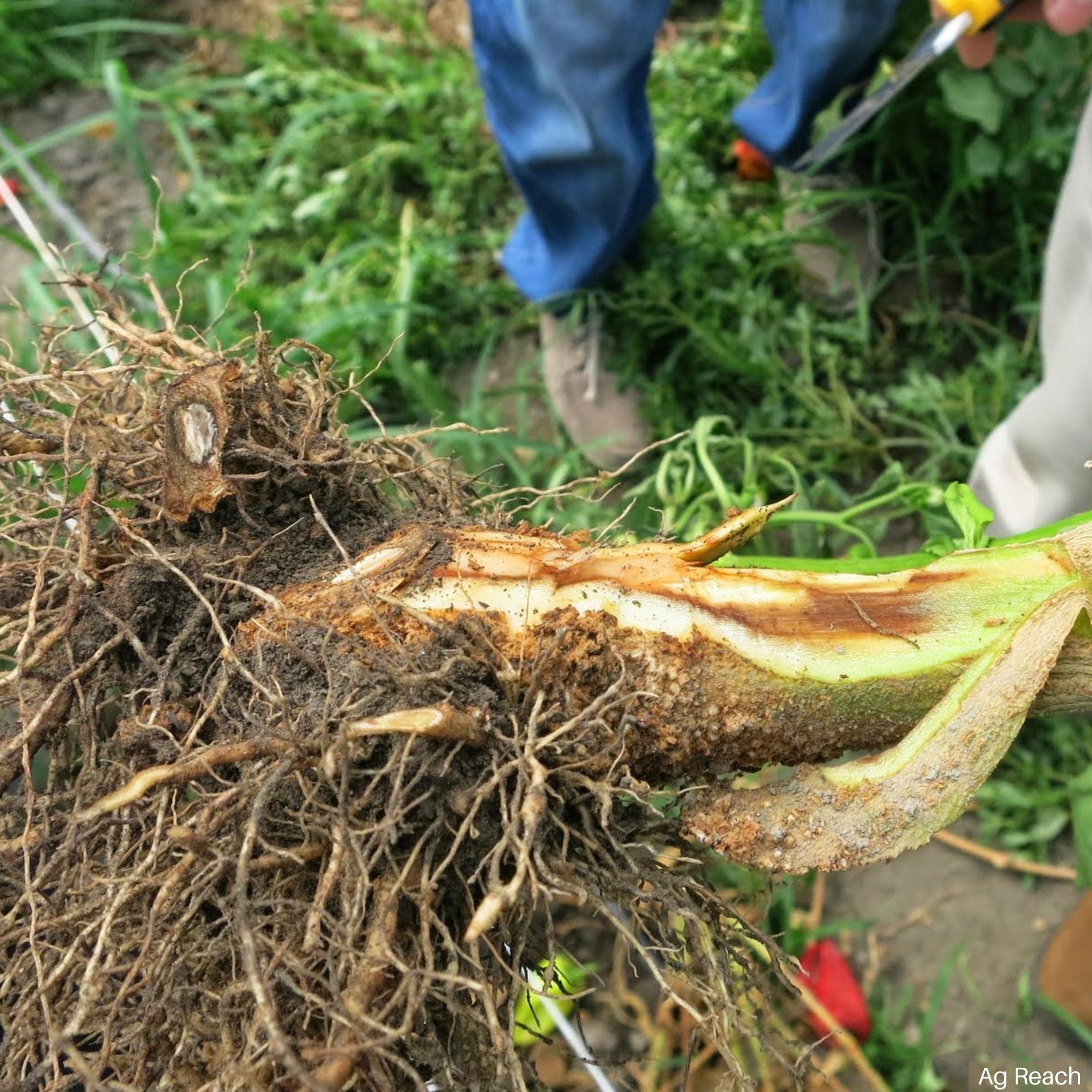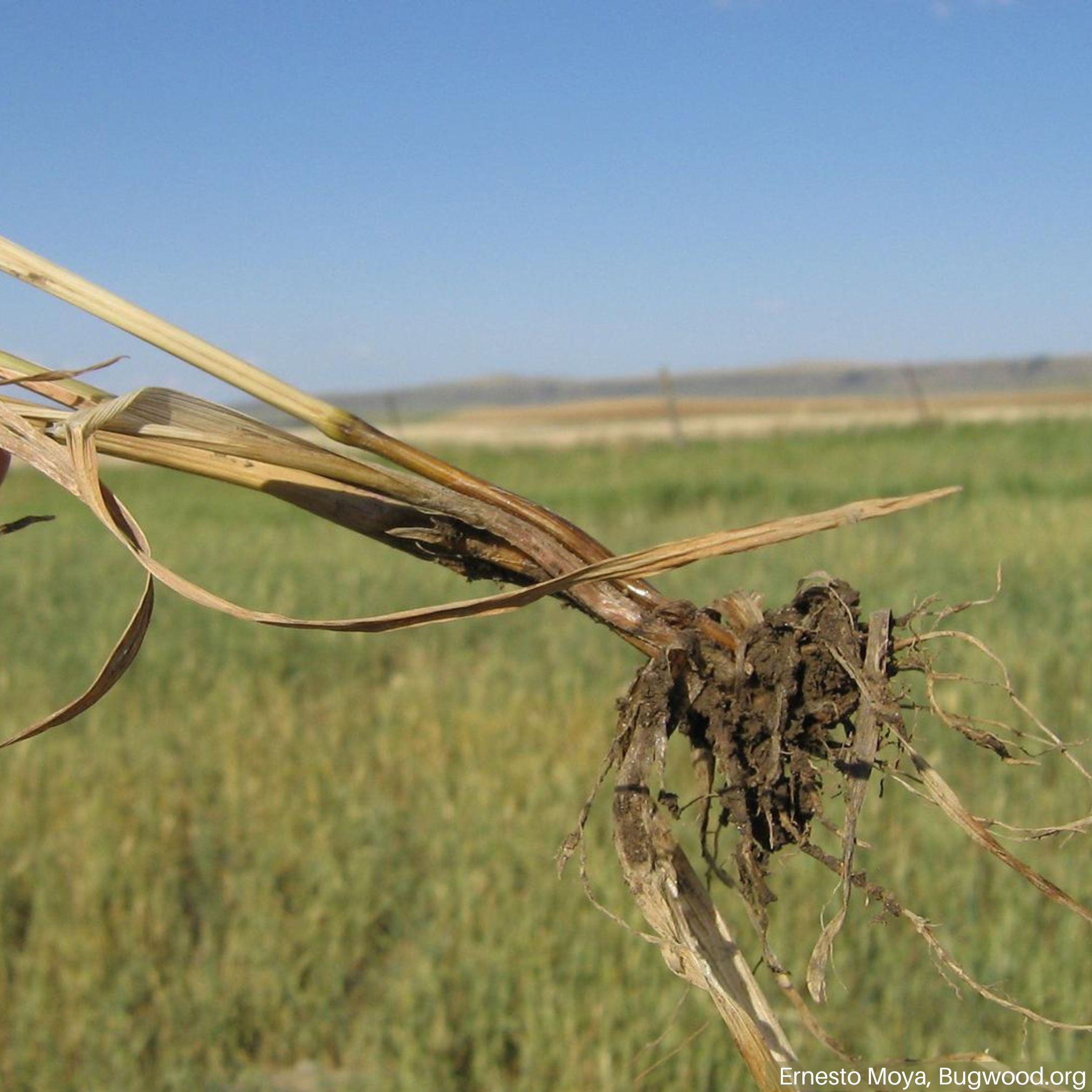Fusarium Crown/Root Rot
HOSTS
- Asparagus
- Brassicas
- Cucurbits
- Solanaceous Crops
BIOLOGY
The Fusarium species that cause this disease are soilborne pathogens. They each can survive in the soil for many years by living as a saprophyte and feeding on plant debris, or as long-lived chlamydospores (resting spores). As a pathogen, F. solani strains can be host-specific but they can survive on roots of other plants such as weeds, making it very difficult to eliminate the pathogen once it has been introduced into a field. Most strains grow best at temperatures between 77 °F to 86 °F and in wet conditions.
SYMPTOMS
- Rotting and necrotic (brown) roots.
- Discoloration and softening of crown tissue.
- Stunted plant growth.
- Wilting and death of plants.
GENERAL MANAGEMENT
- Remove infected plants, including roots, in a timely manner.
- Maintain good sanitation by sanitizing equipment and sterilizing soil.
- Rotate fields with non susceptible crops to prevent buildup of pathogens in the soil.
- Use resistant cultivars when available.
- Ensure proper soil drainage.
FUNGICIDES
In field-grown crops, management requires prevention, because no fungicides are available.
Precautionary Statement: Utah State University and its employees are not responsible for the use, misuse, or damage caused by application or misapplication of products or information mentioned in this document. All pesticides are labeled with ingredients, instructions, and risks, and not all are registered for edible crops. “Restricted use” pesticides may only be applied by a licensed applicator. The pesticide applicator is legally responsible for proper use. USU makes no endorsement of the products listed in this publication.



